GUIDE
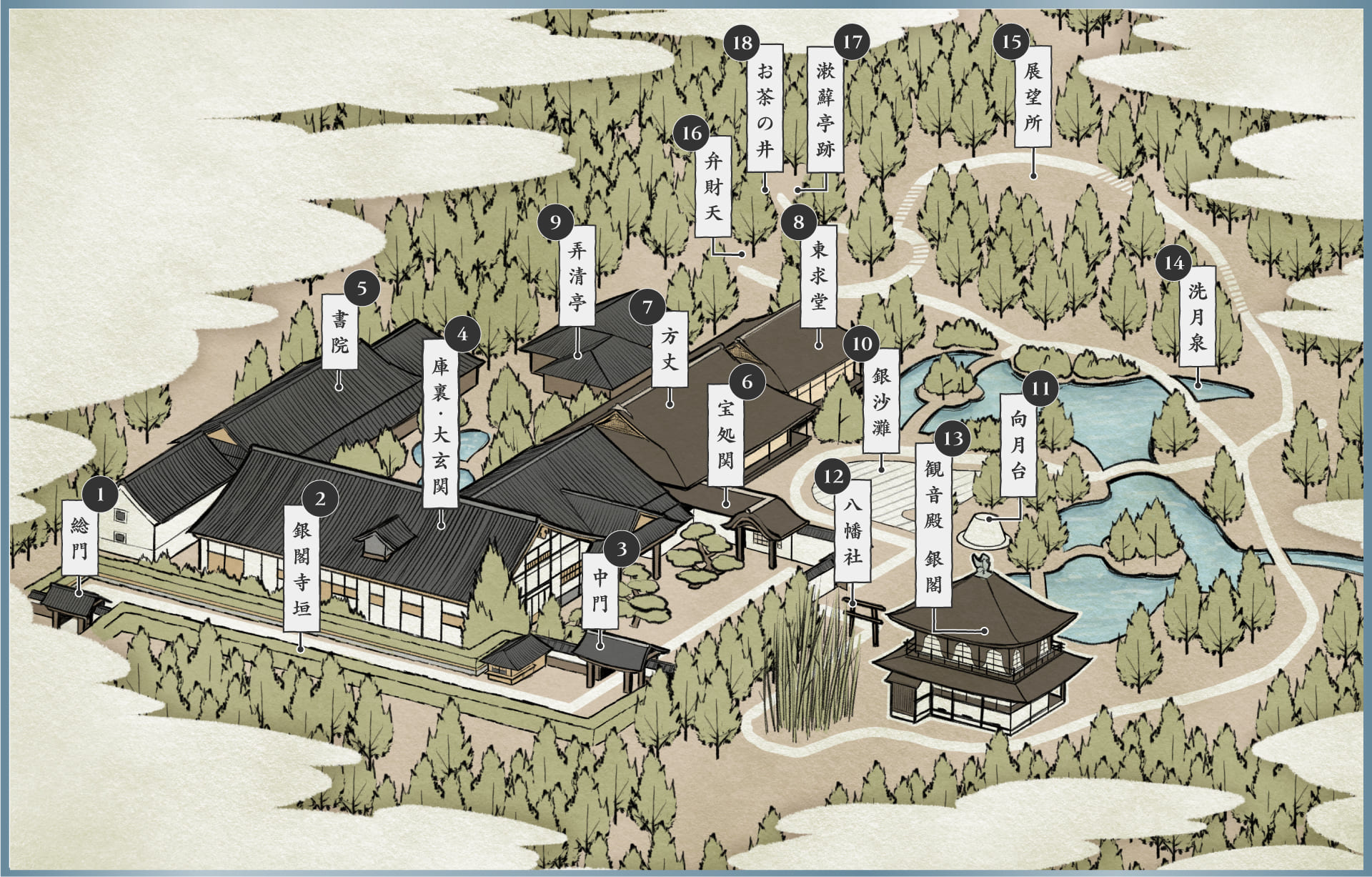

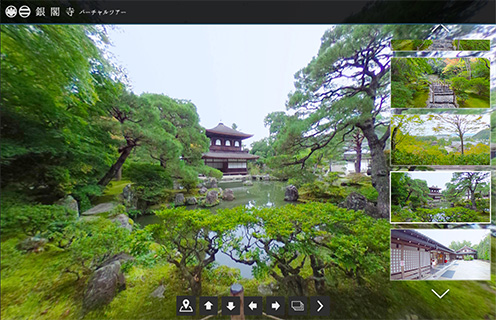
総門Somon
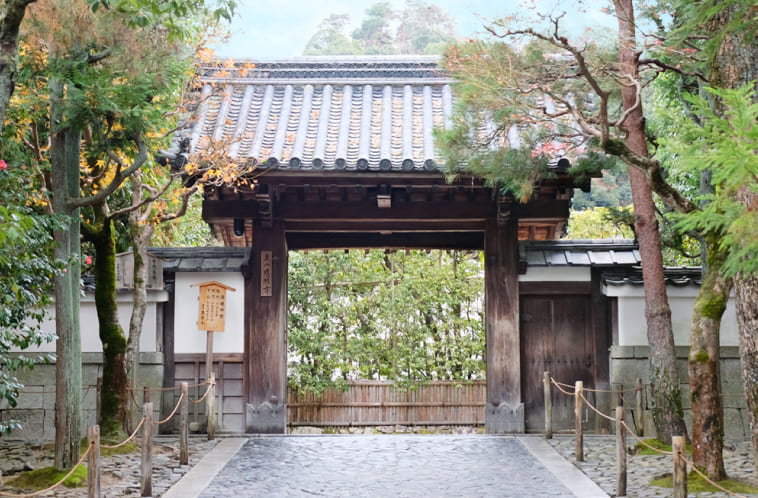
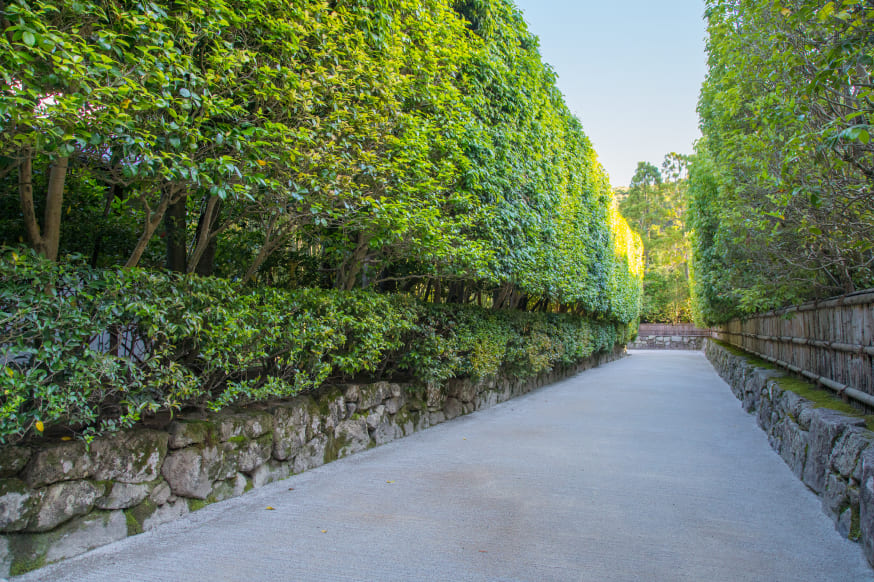
銀閣寺垣Ginkakujigaki
A pathway 50 meters long from the main gate to the central gate. The narrow extended space, lined with ginkakuji-gaki bamboo fences, is the prologue to a grand drama that is about to begin. It is thought that this area was meant to act as a division from the unprotected outside world, but the solemn and artificial atmosphere is actually meant to purify one’s idle and worldly thoughts. It is also a prologue meant to connect both Ashikaga Yoshimitsu and we who live in the tumultuous modern world to the Pure Land.
中門(Reception)Chumon

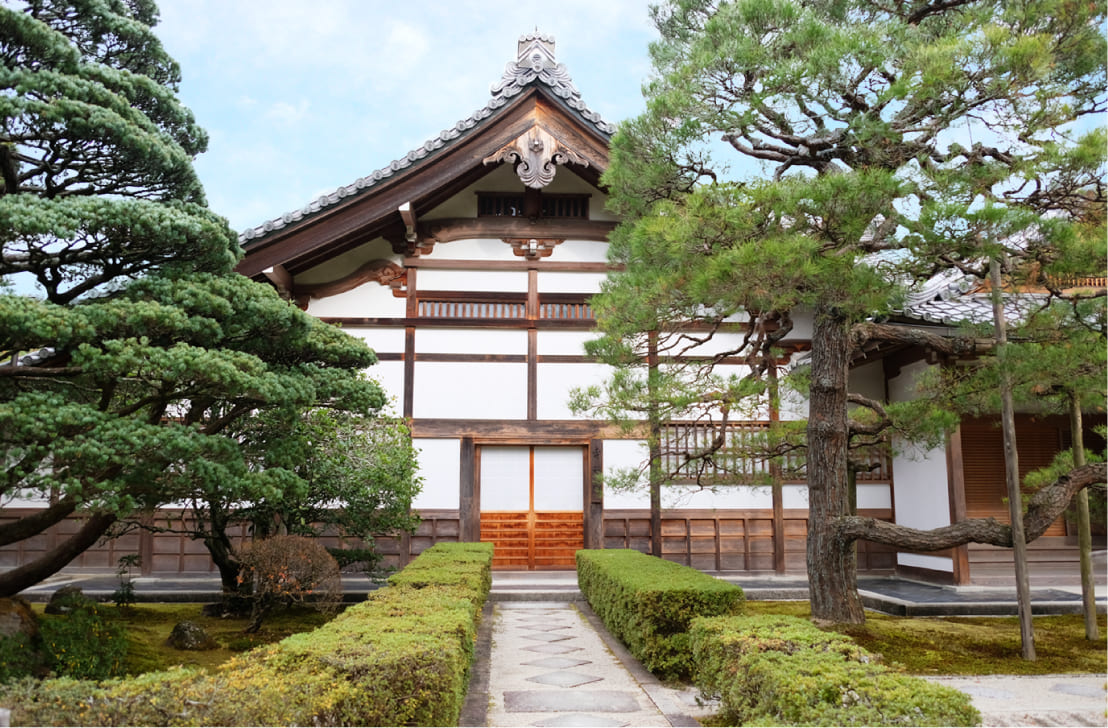
庫裏・大玄関Kuri・Daigenkan
書院(Undisclosed)Syoin
In November 1993, the ten-year anniversary celebration of the construction of the new drawing room was held. The reception hall is decorated with stunning international paintings from the Meiji era, as well as sliding screens painted by the calligrapher Tomioka Tessai. The former temple kitchen’s tea room, the Shuho-ken, has also been relocated. While the architecture keeps with traditional style, the doors are kept wide open to symbolize a new era for Jisho-ji. There are also many ideas for the garden, whose style is steeped in the techniques of the Higashiyama period.
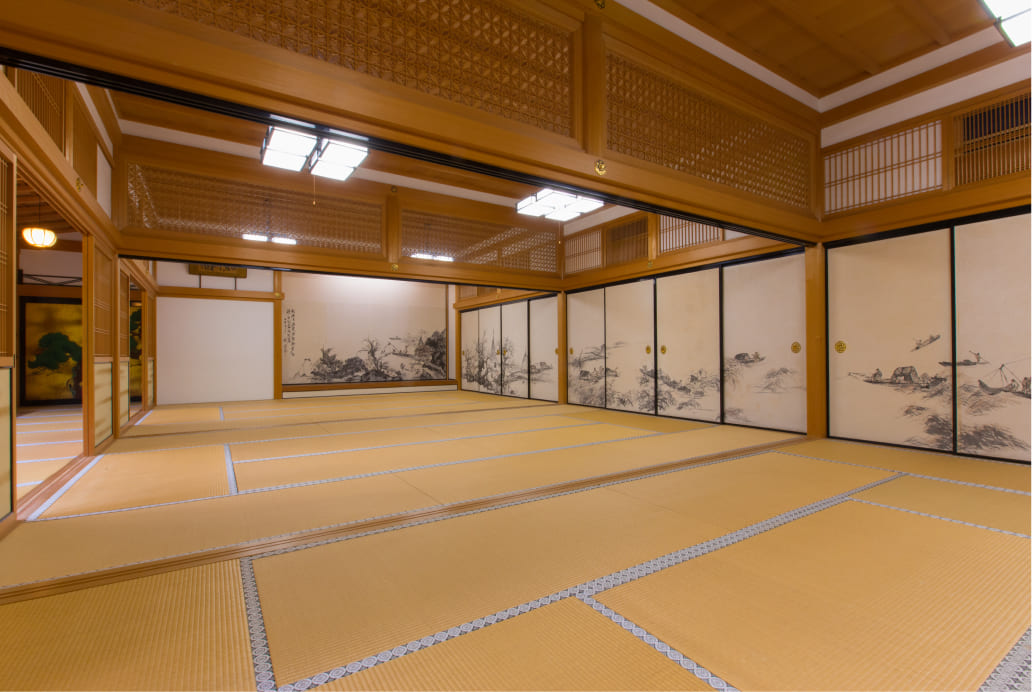
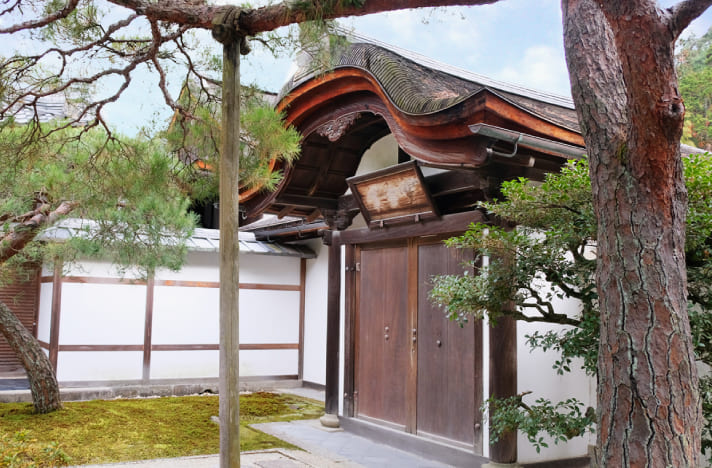
宝処関Hosyokan
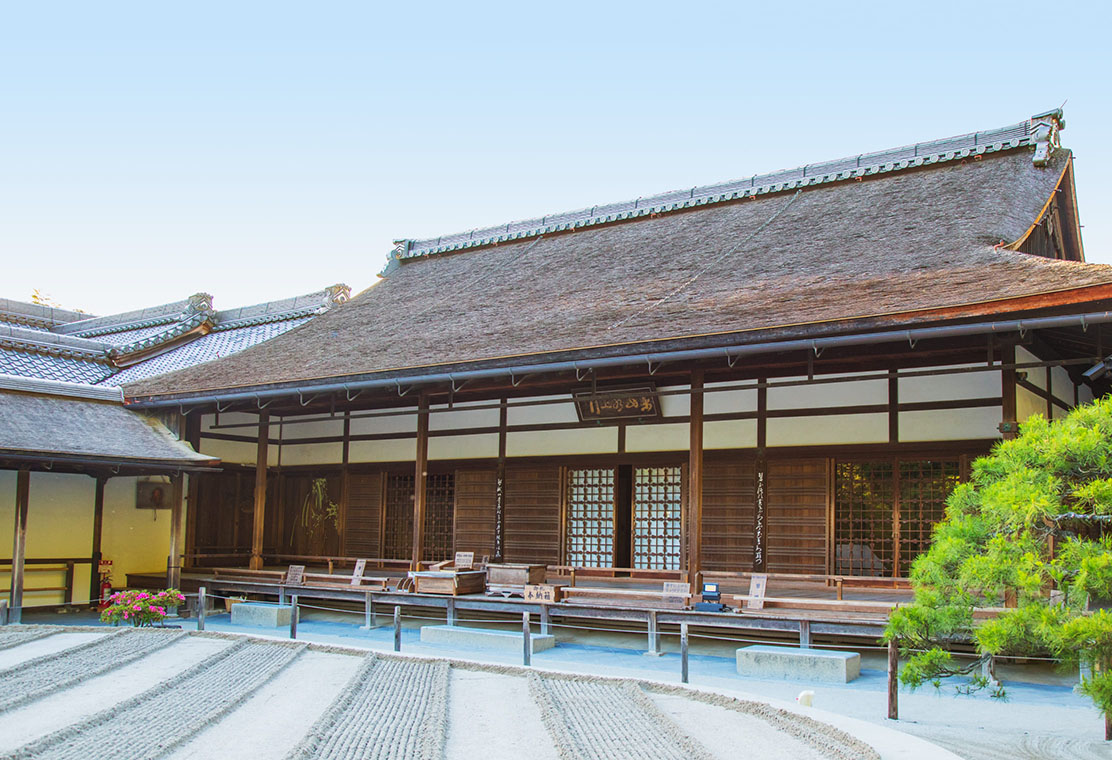
方丈Hojo
The abbot’s chamber (the main hall) was constructed in the middle of the Edo period. The central Ginshadan’s majestic appearance gives one a sense of Ashikaga Yoshimasa’s virtue and influence as well. The principal image, Shakyamuni Buddha, is enshrined here, and on the facade is hung the phrase “Tozan Suijo Ko” (‘The eastern mountains move over the water’), and inside are held images drawn by masters of Song-style painting from the Edo period, Yosa Buson and Ikeno Taiga. From the abbot’s chamber, there is also an absolutely splendid view of Mt. Tsukimatsu.
東求堂Togudo
Built at the same time as the Silver Pavilion’s Kannon-den, the Togu-do is a national treasure, a rare extant remnant of Ashikaga Yoshimitsu’s construction at the time. The Togu-do was originally known as the Jibutsu-do where an Amida Nyorai (Skt. Amitabha Tathagata) was enshrined.
Togu-do was built as a symbol of faith in the Pure Land, and through the surrounding Zen-style garden, we can get a glimpse of Yoshimasa’s inner spiritual world.
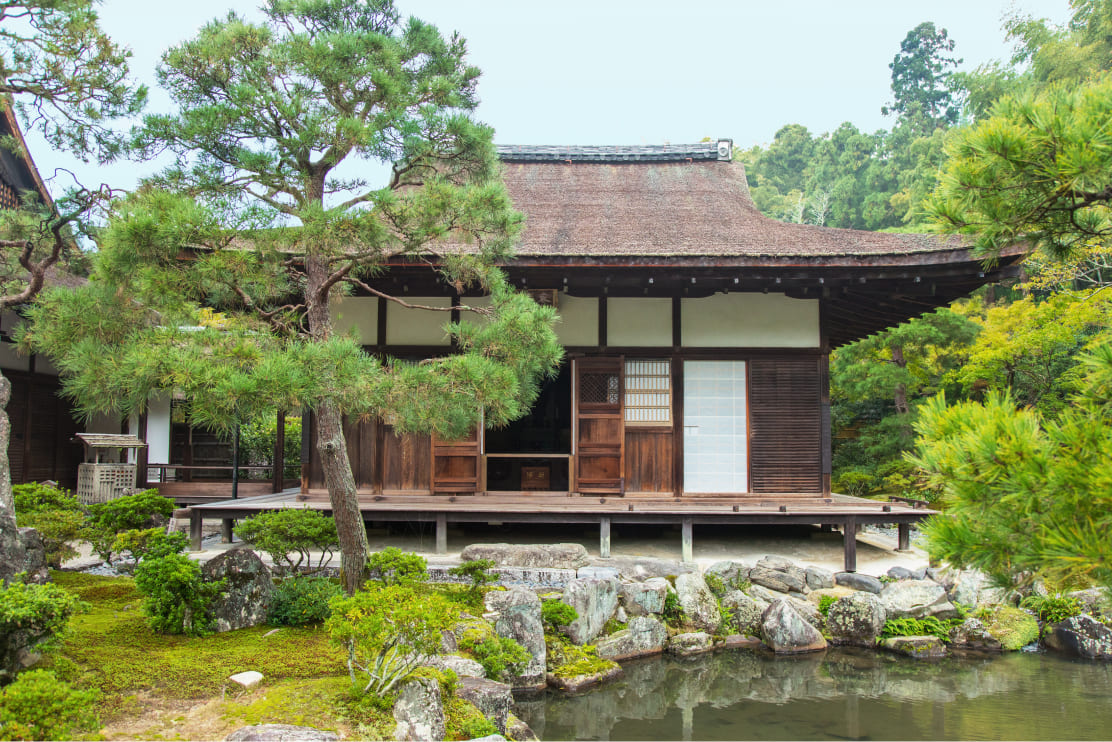
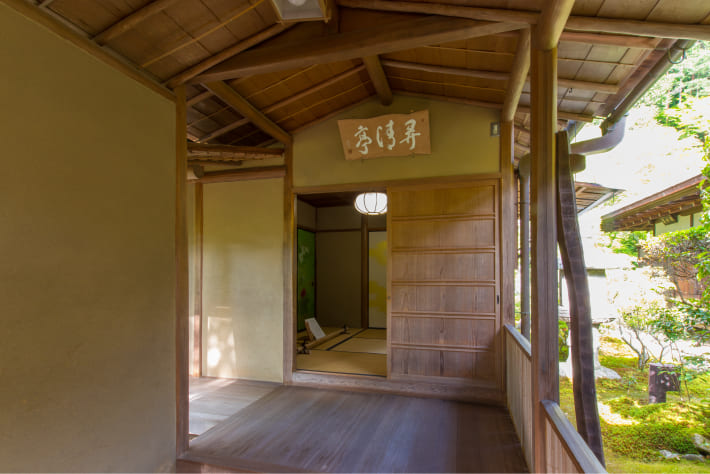
弄清亭Rouseitei
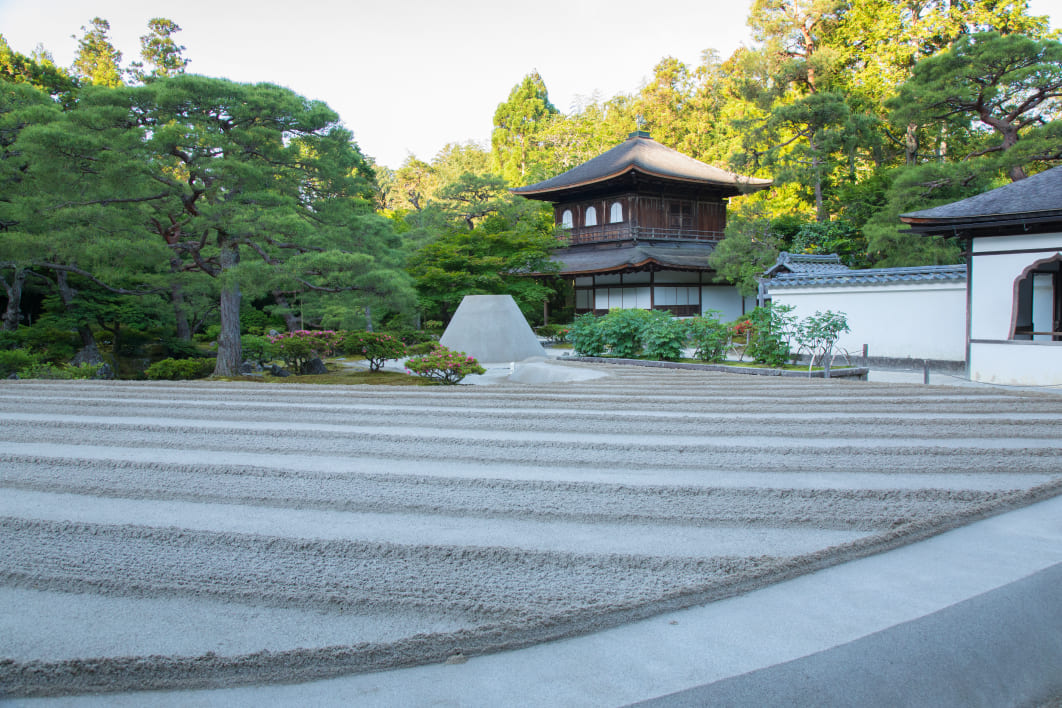
銀沙灘Ginsyadan
In front of the abbot’s chamber, white sand is piled up to form the stair-like Ginshadan and the truncated cone structure of the Kogetsudai. Folklore says that the Ginshadan was meant to reflect moonlight, and the Kogetsudai to appear as if it were sitting atop Higashiyama and holding the moon, but there is little evidence that these explanations actually go back to the Muromachi period and are not just recent inventions. However, these constructions are certainly fantastic and unlike anything else.
向月台Kogetsudai
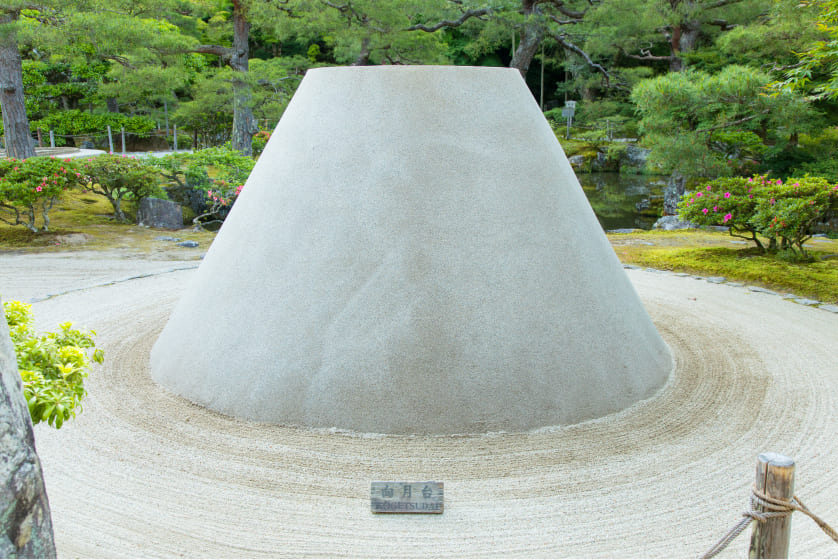
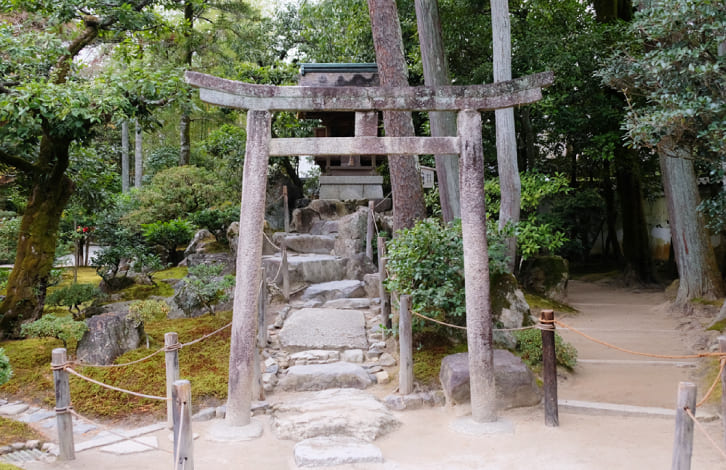
八幡社Hachimansya
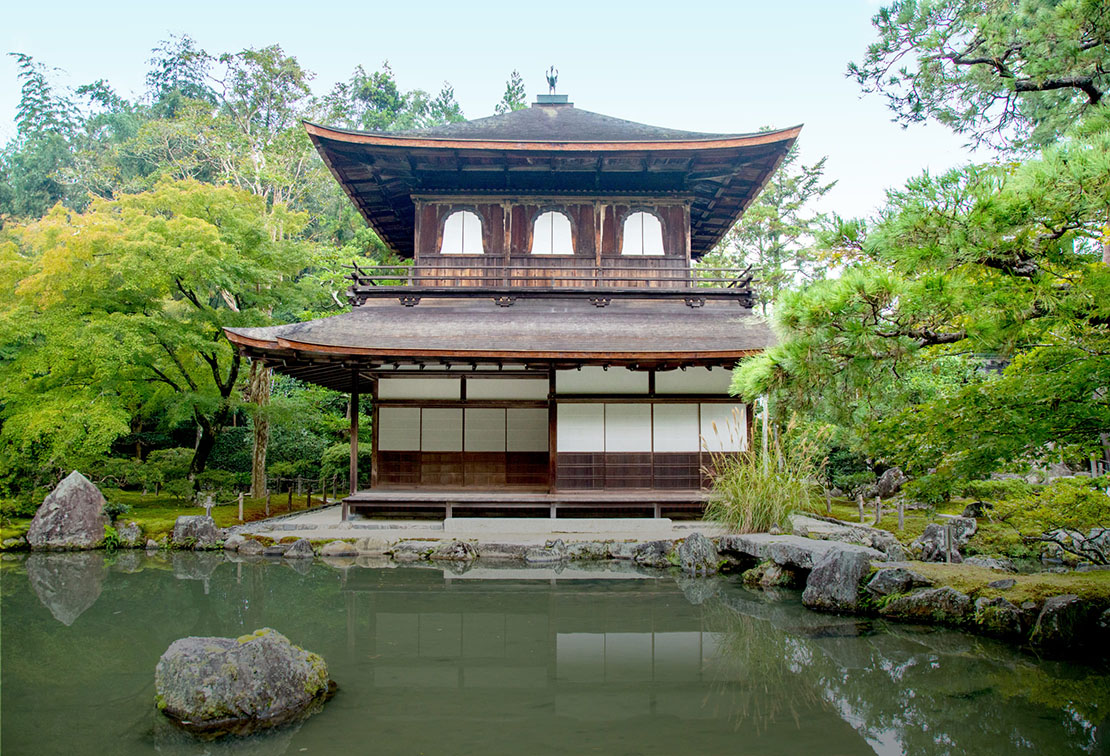
観音殿 銀閣Kannonden Ginkaku
The symbol of Jisho-ji, housed in the Silver Pavilion that gives the temple its popular name, is the national treasure, the Kannon-den. As an expression of his spiritual beliefs, Yoshimasa named the first floor the Shinku-den (Empty Mind Hall) and the second Cho’on-kaku (Wave Sound Pavilion). It is famous for following in the styles of Rokuon-ji’s reliquary hall and Saiho-ji’s Ruriden, while also being the sole remaining example of the architecture of multi-storied building within a garden from the Muromachi period. The contrast between the pile of sand in Kogetsudai and the rippling appearance of Ginshadan invites visitors to a world that is hard to leave.
観音殿 銀閣
Kannonden Ginkaku
LIVE CAMERA

洗月泉Sengetsusen
The waterfalls on the southeastern end of Nishiki Kagami Ike pond bring water all the way from Yamabe Yamakuro to the lower gardens of the Silver Pavilion and Togu-do.
展望所Tenbojo
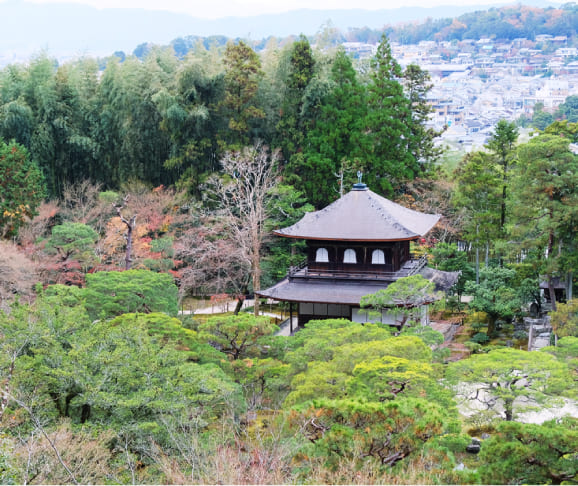
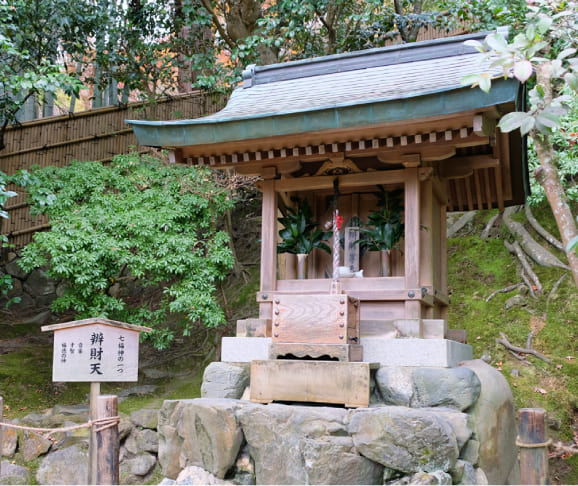
弁財天Benzaiten
漱蘚亭跡Sosenteiato
The upper garden can be seen from the path. In the vicinity of the crumbling Sousen-tei ruins, you can see a unique stone arrangement.
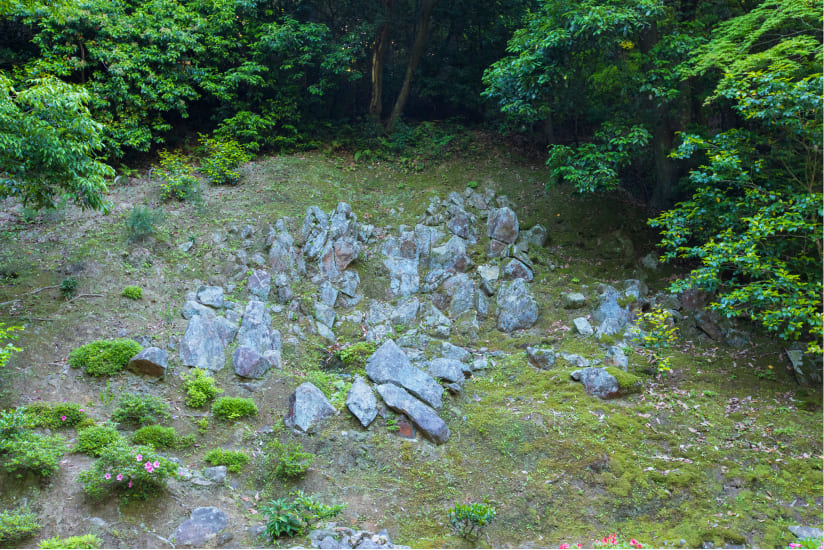
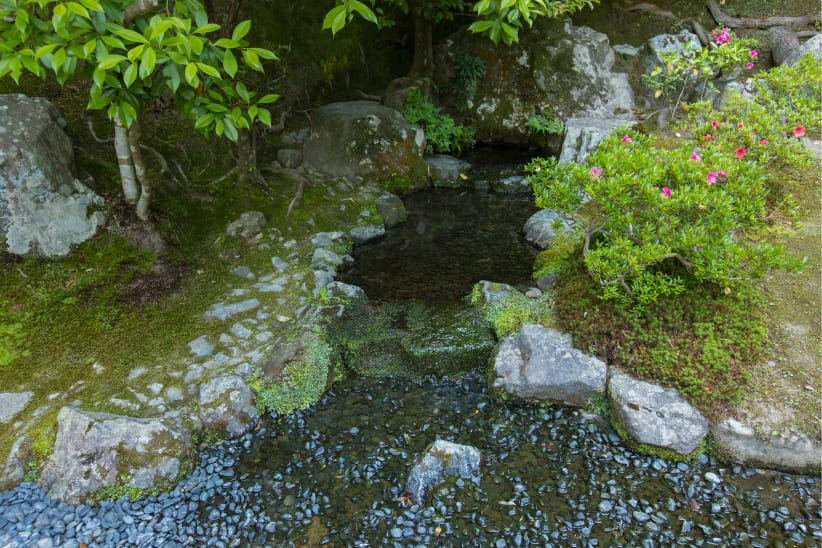
お茶の井Ochanoi
Traveling up from the lower garden to the eastern hillside, one will arrive at a tea well.


